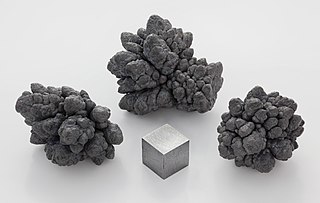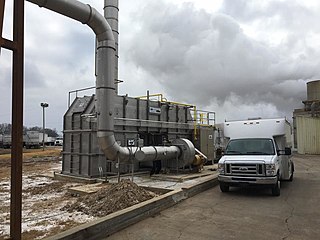This article relies too much on references to primary sources .(December 2009) (Learn how and when to remove this template message) |
Chile's privatization of water has led to many environmental problems.[ citation needed ] Since water tends to flow towards money it is being over-allocated to industries such as mining and agriculture. Of course, the ecosystem itself cannot commit any money to securing water rights and the DGA has no powers for legislation, all it can do is monitor the worsening situation. This is especially true in the northern Atacama Region. In some regions of the north the Atacama regional governor has given out water permits totaling 16,000 cubic meters per second where it has been shown that replenishment rates are near 4,000 cubic meters per second. [1] This imbalance causes water scarcity, which combined with warmer temperatures and less rainfall, has stressed local ecosystems immensely. In the Metropolitan Region of Santiago there has been an increase in wildfires and the country is hard pressed to keep up with mitigation efforts. In 2009 there were at least 290 fires, up from 143 in 2008, burning about 1035 hectares of land. [2]

Chile, officially the Republic of Chile, is a South American country occupying a long, narrow strip of land between the Andes to the east and the Pacific Ocean to the west. It borders Peru to the north, Bolivia to the northeast, Argentina to the east, and the Drake Passage in the far south. Chilean territory includes the Pacific islands of Juan Fernández, Salas y Gómez, Desventuradas, and Easter Island in Oceania. Chile also claims about 1,250,000 square kilometres (480,000 sq mi) of Antarctica, although all claims are suspended under the Antarctic Treaty.
Privatization can mean different things including moving something from the public sector into the private sector. It is also sometimes used as a synonym for deregulation when a heavily regulated private company or industry becomes less regulated. Government functions and services may also be privatized; in this case, private entities are tasked with the implementation of government programs or performance of government services that had previously been the purview of state-run agencies. Some examples include revenue collection, law enforcement, and prison management.

Environmental policy is the commitment of an organization or government to the laws, regulations, and other policy mechanisms concerning environmental issues. These issues generally include air and water pollution, waste management, ecosystem management, maintenance of biodiversity, the protection of natural resources, wildlife and endangered species. Concerning environmental policy, the importance of implementation of an eco-energy-oriented policy at a global level to address the issues of global warming and climate changes should be accentuated. Policies concerning energy or regulation of toxic substances including pesticides and many types of industrial waste are part of the topic of environmental policy. This policy can be deliberately taken to direct and oversee human activities and thereby prevent harmful effects on the biophysical environment and natural resources, as well as to make sure that changes in the environment do not have harmful effects on humans.
Besides lowering the amount of water available, mining and other industrial activities release a large amount of hazardous chemicals and heavy metals such as chrome, lead, copper, mercury, and nickel into rivers and municipal sewage systems. These metals are known to cause cancers and other neurological diseases. It is estimated that only between 5 and 15 percent of sewage is actually treated, while the remainder is pumped raw into streams and the ocean itself. [3] Solid industrial waste is often sent to landfills where it is exposed to precipitation and surface runoff. This ultimately ends up in streams, or worse, the groundwater aquifer where drinking water is obtained. [4]

An industry is the production of goods or related services within an economy. The major source of revenue of a group or company is the indicator of its relevant industry. When a large group has multiple sources of revenue generation, it is considered to be working in different industries. Manufacturing industry became a key sector of production and labour in European and North American countries during the Industrial Revolution, upsetting previous mercantile and feudal economies. This came through many successive rapid advances in technology, such as the production of steel and coal.

Chromium is a chemical element with symbol Cr and atomic number 24. It is the first element in group 6. It is a steely-grey, lustrous, hard and brittle transition metal. Chromium boasts a high usage rate as a metal that is able to be highly polished while resisting tarnishing. Chromium is also the main additive in stainless steel, a popular steel alloy due to its uncommonly high specular reflection. Simple polished chromium reflects almost 70% of the visible spectrum, with almost 90% of infrared light being reflected. The name of the element is derived from the Greek word χρῶμα, chrōma, meaning color, because many chromium compounds are intensely colored.

Lead is a chemical element with symbol Pb and atomic number 82. It is a heavy metal that is denser than most common materials. Lead is soft and malleable, and also has a relatively low melting point. When freshly cut, lead is silvery with a hint of blue; it tarnishes to a dull gray color when exposed to air. Lead has the highest atomic number of any stable element and three of its isotopes each include a major decay chain of heavier elements.
In 2000 an assessment determined that a one-time investment of $1.4 million by the industrial firms would generate an annual savings of $1.9 million and a 32 percent reduction in pollution. [5] The assessment showed that it is possible to reduce pollution and save money, if the companies are willing or if the government takes stronger action. It is unlikely companies will take this action their own since the Chilean government is severely lacking in environmental regulation enforcement. That it not to say that there are no incentives for companies to treat industrial wastewater, however. The Santiago water and sewage utility – a private company – imposes charges based on the concentration of industrial effluent and places limits on the maximum amount of major pollutants. It charges the companies a large amount if their waste levels are too high, a stronger incentive to reduce pollution. [6] This demonstrates that companies are receptive to incentives and penalties if they are implemented.[ citation needed ] If enough social pressure is put on the government perhaps legislation can be enacted to reduce the environmental impact from major industries that have been given much leniency thus far.
To invest is to allocate money in the expectation of some benefit in the future.

Pollution is the introduction of contaminants into the natural environment that cause adverse change. Pollution can take the form of chemical substances or energy, such as noise, heat or light. Pollutants, the components of pollution, can be either foreign substances/energies or naturally occurring contaminants. Pollution is often classed as point source or nonpoint source pollution. In 2015, pollution killed 9 million people in the world.
Industrial wastewater treatment describes the processes used for treating wastewater that is produced by industries as an undesirable by-product. After treatment, the treated industrial wastewater may be reused or released to a sanitary sewer or to a surface water in the environment.









